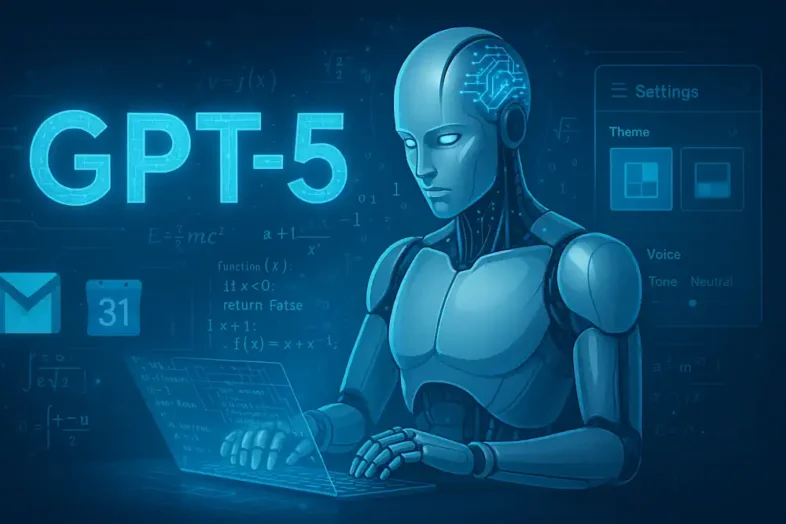OpenAI has officially launched GPT-5, its most advanced AI model to date, marking a significant milestone in artificial intelligence development. CEO Sam Altman described GPT-5 as a “Ph.D.-level expert in anything,” highlighting its superior capabilities in writing, coding, math, and science.
Table of Contents
Key Enhancements and Performance Improvements
GPT-5 introduces several notable enhancements over its predecessors. The model boasts improved speed, accuracy, and a reduced incidence of hallucinations, making interactions more reliable. It excels in coding tasks, enabling users – even those without programming experience – to build applications, websites, and games with smarter debugging and workflow support.
Personalization and User Experience
In terms of user experience, GPT-5 offers dynamic personalization options, including voice tone control and new UI themes, allowing users to tailor interactions to their preferences. The model also features a 256K token window for long-context coherence, enhancing its ability to maintain context over extended conversations.
Integration with Google Services
Integration with Google services like Gmail and Calendar further streamlines user interactions, positioning GPT-5 as a versatile tool for both personal and professional use. The model is available for free to all ChatGPT users, with higher usage limits for Plus and Pro subscribers, and serves as the new default for enterprise and educational users.
Mixed User Reactions
Despite the advancements, the release of GPT-5 has sparked mixed reactions. Some users have reported performance inconsistencies and reduced functionality compared to previous versions, leading to discussions about the model’s reliability and the need for further refinement.
Looking Ahead
As OpenAI continues to refine GPT-5, the model’s introduction signifies a substantial step toward more sophisticated and accessible AI applications, with the potential to reshape various industries and daily interactions.


